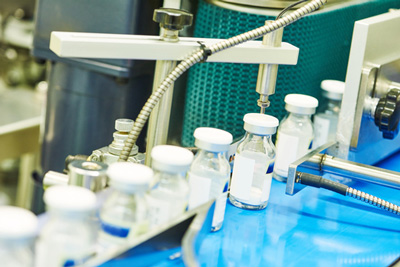Eurasian operations and production strategies examined at CPhI Russia and CPhI South East Asia
Posted: 23 May 2016 | | No comments yet
UBM EMEA, leading organisers of CPhI Russia and CPhI South East Asia, provide an Asia trends update following the closing of its events…


UBM EMEA, leading organisers of CPhI Russia and CPhI South East Asia, provide an Asia trends update following the closing of its events in Moscow and Jakarta.


The Russian and ASEAN editions of CPhI saw over 7,000 visitors and more than 450 exhibitors attend, network and do business over the course of two three-day shows.
Collectively, CPhI Russia and CPhI South East Asia represent two of the growing pharma emerging economies within the continent and the events provided an on the ground view of market changes. As these countries progress up the pharmaceutical value chain, demand for foreign investment has increased, which in turn, has stimulated greater government support into the healthcare system and industry, as well as increasing the internationalization of these pharma hubs.
Chief amongst pharma trends in Russia is the reported upgrading of existing manufacturing sites towards GMP standards. Meanwhile, in Indonesia and the ASEAN region, there has been a notable increase in finished dosage and contract services providers seen at the event. This demonstrates not only a growth in pure numbers, but also the industry’s progression and rapid advancement of technologies and service offerings.
Another notable trend has been the increase in demand for foreign investment in both countries, as imports grow and international funding is encouraged fuelled by government support. An overwhelming 76% of total pharmaceutical sales in Russia are attributed to imported drugs, and Indonesia now allows foreign ownership of up to 85% in the pharmaceutical sector. The country is also currently importing over 90% of the pharmaceutical ingredients it consumes, and the total value of imports during the first half of 2015, saw a staggering rise of 17% to $296 million.
With Russia’s Pharma 2020 plan in motion, demand for international pharmaceutical ingredients, manufacturing and packaging equipment is flourishing in the country and CIS region. Similarly, Governments across the ASEAN region are introducing universal healthcare programmes, with the consequential rising demand for all categories of medicines, especially generic drugs. For example, since launching its mandatory healthcare coverage programme (JKN) in 2014, Indonesia’s government healthcare spending has increased by 4%, and is forecast to reach USD 7.8 billion in 2016.
Moreover, the health ingredients market has also rapidly increased in South East Asia – the Indonesian health and wellness food sector is forecasted to grow 6% CAGR by 2019. Highlighting this growth, CPhI launched Health Ingredients South East Asia in 2016, and the event has already seen great numbers of nutraceuticals, functional food, beverages and dietary supplements providers attend.
During both congresses, there was a clear desire to increase operations within the Eurasian region, as addressed by the in-depth conference agenda. Attendees gained vital insights through sessions that examined ‘Sourcing APIs from India’, ‘Harmonization of requirements for medical products Circulation within the Eurasian Economic Union’, ‘Prospects of using natural ingredients and components in medicines production’ and ‘New Strategies for Asia Market and Indonesia on the Production & Technology Advancing Behind the Glass Parenteral Packaging’.
Chris Kilbee, Group Director Pharma at UBM EMEA, commented: “What we have seen in the past few years, is the diversification of pharma services in both countries. Russia and Indonesia are set to progress and develop their pharma industries very quickly, and I expect CPhI to grow at a similarly fast pace. We are really excited about the future of the Asian pharma market and with our regional events, we will continue to boost growth in these pharma emerging economies.”




